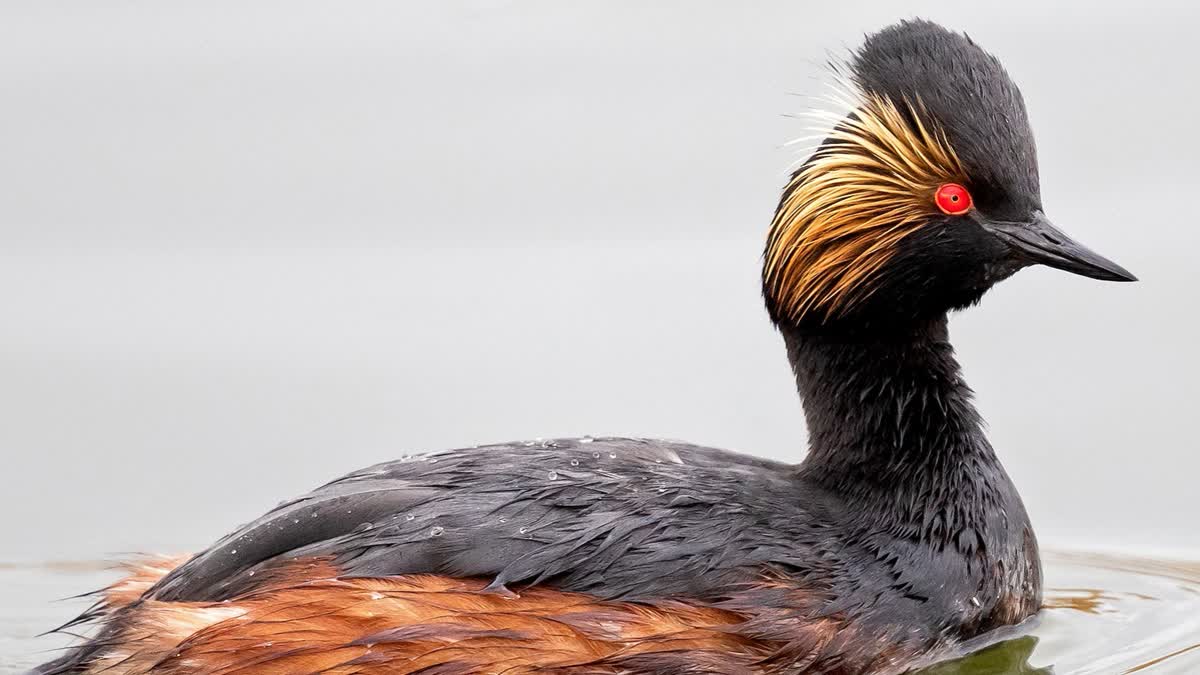Srinagar (Jammu and Kashmir): In a rare bird sighting, a Black-necked Grebe was sighted in the Hokersar wetland which is a Ramsar site in Srinagar, the summer capital of Jammu and Kashmir, ETV Bharat has learnt. This is an interesting development as it is the first confirmed documentation of Grebe from Jammu and Kashmir. Sources said that the bird's sighting was reported on Monday in 'Indian Birds', a well-known bi-monthly ornithology journal/newsletter.
The sighting was done by birdwatcher Reyan Sofi. The Black-necked Grebe is a small gregarious bird that may be found throughout Asia and Europe. It spends the winter in east Asia, east Africa, and the southern Palearctic. Additionally, breeding populations have been discovered in central Mexico, western USA, southwest Canada, and southern Africa.
During migration, the black-necked grebe may cover up to 6,000 kilometers even though it seldom takes to the skies. Furthermore, after completing a migration to reach a location where it may safely molt, it goes without wings for two months. The grebe's weight may double during this molting period. There have occasionally been thousands of grebe deaths during the perilous treks to reach these locations. Despite this, the International Union for Conservation of Nature (IUCN) has designated it as a least concern species.
Presumably, this is the world's most abundant grebe. The black-necked grebe's primary food source is insects, which it catches when it is flying or on the water's surface. It occasionally gathers leaves for gleaning. This grebe dives for crustaceans, mollusks, fish, tadpoles, and frogs. Bird watcher Reyan Sofi while speaking with ETV Bharat on phone said, "reports of its breeding had come from the Union Territory of Ladakh in India.
